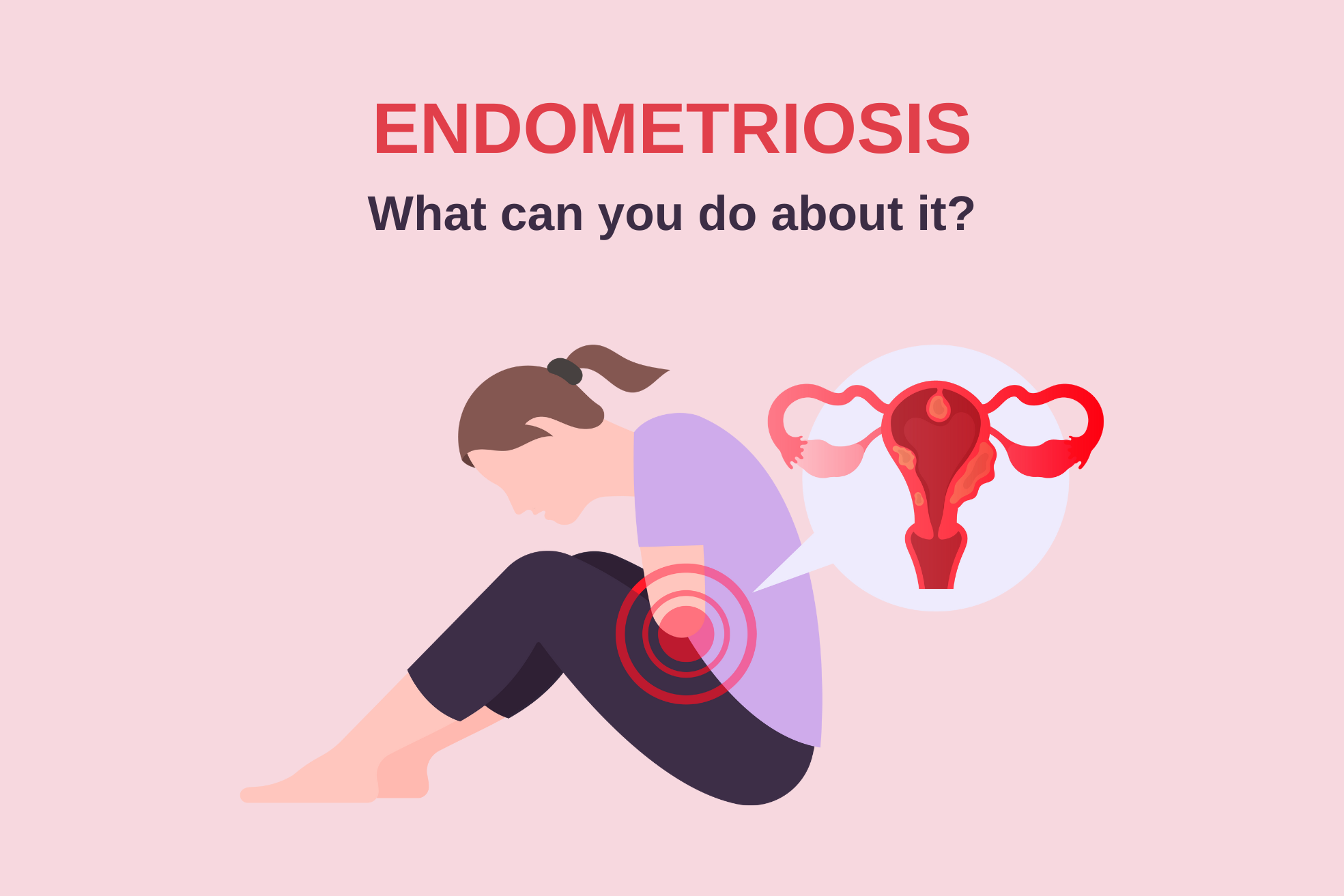Endometriosis:
Endometriosis is a gynecological disorder characterized by the presence of endometrial (uterine lining) cells outside the uterus, most commonly in the pelvic region. Menstrual blood flows back into the pelvic cavity through the fallopian tubes, instead of exiting the body through the vagina. The endometrial cells attach and form lesions outside the uterus. When this occurs on the ovaries, it is referred to as a chocolate cyst. However, it can also occur in the fallopian tubes, intestines, ligaments supporting the uterus, the peritoneum, the bladder, and other regions of the lower abdomen. It may spread to the vagina, lungs, heart, and brain, and can even affect surgical scars.
The hormonal changes of the menstrual cycle affect these misplaced endometrial-like tissues, causing the area to become inflamed and painful. This means that the tissue will grow, thicken, and break down. Over time, the broken-down tissue has nowhere to go and becomes trapped in the pelvis.
The trapped tissue in the pelvis can have several negative effects:
- Irritation
- Scar formation
- Adhesions, where tissue binds pelvic organs together
- Severe pain
- Fertility problems
Main Symptoms of Endometriosis:
- Painful menstruation
- Irregular periods
- Heavy menstrual bleeding
- Severe abdominal cramps
- Lower abdominal/pelvic pain
- Lower back pain
- Painful bowel and urination
- Bloating
- Urinary tract infections
- Painful sexual intercourse, sometimes accompanied by bleeding
- Irritated genital area
- Fatigue
- Discomfort
- Fertility problems, infertility
Why does endometriosis cause problems?
When endometrial cells are misplaced, they can easily trigger chronic inflammation. These tissue fragments form endometriomas, which can rupture, causing blood to leak and intense pain. Abnormal tissue masses can also disrupt the function of affected organs; for example, if they attach to the fallopian tubes, they are often a cause of infertility. Some surveys suggest that one in four women may not get pregnant due to endometriosis.
Since endometrial tissue, wherever it is, reacts to hormonal changes, these tissue masses thicken, bleed, and cause cramps in sync with the menstrual cycle.
Causes of endometriosis
- Environmental damage
- Pollution
- Chemicals (e.g., substances in disposable sanitary pads and tampons like sodium polyacrylate, dioxins)
- Genetic predisposition
- Diet (red meat, sugar)
- Chronic stress
Currently, endometriosis cannot be cured, but its symptoms can be managed or alleviated to some extent.
Diagnosis:
While abdominal ultrasounds have good sensitivity, they usually do not reveal endometriosis. Its diagnosis is made through laparoscopic surgery.
Treatment:
- Laparoscopic surgical intervention
Supplementary therapy:
- Strengthening the immune system
- Avoiding stressful situations
- Healthy diet: Avoid carbonated drinks, caffeine, alcohol, sugar, refined flour, red meat, foods rich in additives as they can exacerbate inflammation and pain. Consumption of omega-3 fatty acid-rich foods (herring, salmon, flaxseed oil) and magnesium-rich foods, which act as muscle relaxants.
- Supplements to improve quality of life: Ashwagandha, maca, shatavari, baobab, vitex (available in health stores as powder or capsules). Adaptogenic herbal supplements are excellent natural hormone regulators that can contribute to a normal menstrual cycle, relieve premenstrual symptoms, restore hormonal balance, and treat fertility issues.
- Half an hour of exercise daily: The endorphins released during exercise have pain-relieving effects.
- Using innovative textile-based menstrual underwear, washable pads, or medical silicone menstrual cups instead of disposable (chemical-laden) sanitary pads and tampons: In recent decades, coinciding with the rise of disposable products, there has been an increase in gynecological diseases and infertility in young women. Since women menstruate for decades, using disposable feminine hygiene products exposes them to serious risks due to the chemicals they contain (sodium polyacrylate, dioxins). The female intimate area is richly supplied with capillaries, so these chemicals can easily be absorbed through the mucous membranes. An average sanitary pad is 90% plastic, meaning its main component is crude oil. It may contain BPA, BPS, and phthalates, which, as studies have shown, can affect the female hormonal system. The sodium polyacrylate compound responsible for absorbing moisture in pads and tampons is extremely toxic. Some research suggests it can negatively affect the menstrual cycle, extend it, and cause abdominal cramps.
- Many women struggle with recurring gynecological issues (such as vaginal dryness, fungal infections, eczema), which can also be traced back to the use of disposable products. Fragrances in pads can cause skin irritation.
Washable, reusable feminine hygiene products are made from much more natural materials than disposable ones. The materials used are certified by the OEKO-TEX Standard 100, which indicates that the product does not contain harmful substances, making it safe and skin-friendly.
In our blog post, we discussed dietary supplements. There are many superfoods available that are excellent natural hormone regulators and contribute to the healthy functioning of the female hormonal system. We recommend them to you if you have menstrual issues or are dealing with mood swings and other PMS symptoms. They can also be a great natural aid for those struggling with fertility problems.


